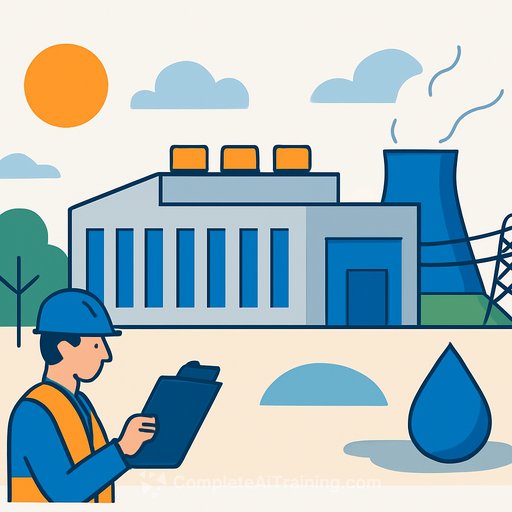OpenAI-Backed Data Center Near Ann Arbor: What Builders Need to Know
OpenAI and partners plan a large data center complex in Washtenaw County's Saline Township. The plan calls for three single-story buildings at 550,000 square feet each, with construction targeted to start early next year. The budget is pegged at more than $7 billion, with 2,500 construction jobs and 450 onsite roles once operational. The project expands capacity in collaboration with Oracle for energy-intensive AI systems.
Why this matters for real estate and construction
Data centers are driving a fresh wave of industrial development across the Midwest. They bring short-term construction employment, long-term tax revenue, and specialized trade demand, while relying heavily on electricity and cooling. Communities are weighing infrastructure strain against fiscal upside. For builders, this is steady, technical work with strict uptime, safety, and phasing requirements.
Project snapshot
- Developer: Related Digital (a subsidiary of Related Cos.)
- Program: Three single-story buildings, ~550,000 sq. ft. each
- Schedule: Groundbreaking targeted early next year
- Budget: $7B+ (per reporting)
- Jobs: ~2,500 construction, ~450 onsite operations
- Strategic partner: Oracle (capacity expansion for AI workloads)
Utilities and infrastructure
DTE Energy will supply electricity, with new battery energy storage financed by the project. The utility states existing customers will not be affected. The plan includes a closed-loop water system that avoids additional withdrawals from the Great Lakes. Expect heavy coordination on substation upgrades, feeders, and interconnection sequencing.
Policy and incentives
State legislation lowering the cost of building AI infrastructure helped land the project in Michigan. The governor's office calls it the largest one-time investment in state history. Incentive stacks, permitting acceleration, and municipal cooperation are central to timing and phasing. If you build in this category, get familiar with state and local tools that compress schedules and offset carrying costs.
Market context
Data centers accounted for an estimated 4.4% of U.S. electricity use in 2023 and could reach double digits by the middle of the decade. Construction activity is at a high point, with a 69% year-over-year increase from 2023 to 2024, per CBRE. For background on energy use in data centers, see the U.S. Department of Energy's guidance here. CBRE's latest trends report is here.
What this means for your pipeline
- Site and grid readiness: Expect high electrical capacity and redundancy, new or expanded substations, and battery energy storage integration. Plan for noise, heat rejection, and setback compliance.
- MEP and cooling: High rack densities push liquid cooling and closed-loop systems. Validate heat rejection strategy (dry coolers, adiabatic assist) and water treatment for minimal makeup and blowdown.
- Long-lead procurement: Switchgear, generators, UPS, transformers, chillers, prefabricated skids, and controls have extended lead times. Lock in early with vendor pre-approvals and alternates.
- Delivery model: Fast-track with phased packages is common. Design-assist for electrical and mechanical trades reduces rework and compresses critical path.
- Labor planning: Peak manpower can be significant across concrete, steel, electrical, mechanical, low-voltage, controls, and commissioning. Confirm union or open-shop approach early.
- Permitting and code: Coordinate early with AHJs on phased approvals, temporary power, and commissioning procedures. Third-party plan review can speed submittals.
- Community and tax: Expect structured community engagement. Property tax revenue and local workforce commitments often come with reporting requirements.
Risks to manage
- Interconnection delays: Build a utility-critical path with float. Battery storage can smooth peaks but does not replace upstream capacity.
- Equipment scarcity: Dual-source major equipment and prequal backup suppliers. Reserve factory slots and require milestone tracking.
- Water and heat rejection: Closed-loop reduces draw, but verify makeup water, blowdown handling, and thermal discharge limits.
- Scope creep: Tier upgrades, density changes, and cybersecurity requirements can trigger redesigns. Use clear change control tied to performance criteria.
Action items
- Prequal with the developer and key trades now; understand security, badging, and background requirements.
- Kick off long-lead procurement and hold pre-award meetings with electrical and mechanical OEMs.
- Engage DTE early to map substation work, feeders, and commissioning power.
- Set up a phased permit plan and commissioning schedule with third-party agents.
If your team is quoting AI-adjacent builds and wants stronger client conversations, a quick skills refresh helps. Explore role-based AI learning paths here.
Your membership also unlocks:





